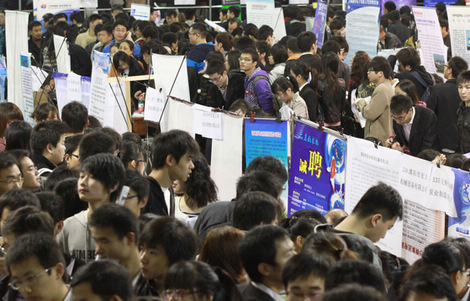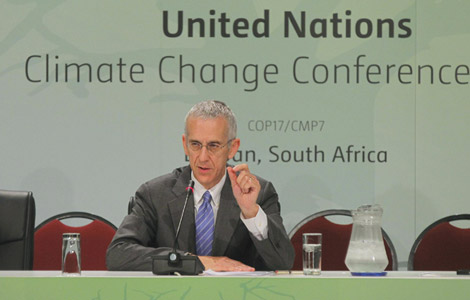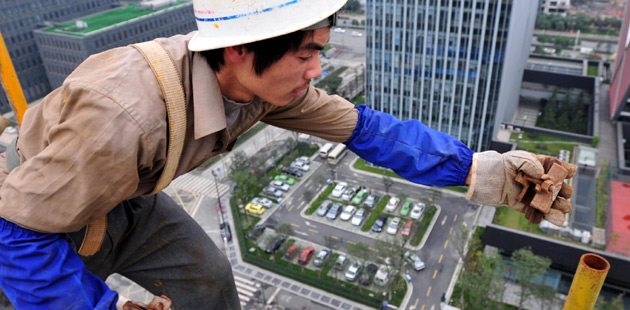China needs more, cleaner toilets
Updated: 2011-11-24 20:14
(Xinhua)
|
|||||||||||
BEIJING - Jack Sim, founder of the World Toilet Organization, said 2.6 billion people around the world lack access to clean toilets, and at least 1 billion more toilets are needed in order to solve this problem.
China's cities had only 118,000 public toilets by the end of 2009, an inadequate number considering China's huge population and fast pace of urbanization, said Tao Hua, vice-president of the China Association of Urban Environmental Sanitation, at the summit of the World Toilet Organization that ended Thursday.
While Tao and other representatives looked into ways to improve the world's toilets and sanitation conditions during the three-day summit held in south China's island province of Hainan, a man in east China was pleasantly surprised to learn that the public toilet-locating software he developed has been warmly received.
Huang Li, the chief operating officer of a Nanjing-based software company, developed "Ohbaba," a program to help mobile phone users locate the 20 nearest public toilets within 2 km.
In addition to locating toilets, the software can also provide some information about the facilities, including whether toilet paper is offered, the availability of a handicapped-accessible commode, service times and the facilities' sanitary conditions.
Users also have the option of adding new facilities to the program's database.
Huang said that nearly 500,000 people downloaded the software in the three months following its release, and it was very "popular and recommended thousands of times on Weibo," China's Twitter-like microblog service.
Ohbaba was even named one of the most valuable mobile applications of 2011 by New Weekly, a novel and pioneering magazine in south China's Guangdong province.
Huang said he was inspired to develop Ohbaba when he had to use the restroom, but the only nearby toilet he knew of had a long queue outside.
Many Chinese people can commiserate with Huang, as it is not always easy to find latrines in public places, and when one is finally found, many people are already waiting to use it.
At the summit, some people joked that KFC and McDonald's have the best public toilets in China for two reasons: both restaurants have many branches throughout the country; they are regularly serviced and cleaned, unlike public toilets which tend to be unsanitary.
With standards of living rising, Chinese municipal authorities are taking measures to solve the country's toilet predicament.
Han Zhipeng, a member of the Guangzhou municipal committee of the Chinese People's Political Consultative Conference, had problems with crowded public toilets, leading him to file a proposal with government authorities.
"A lack of good municipal planning for public toilets during urbanization was a major thing that led to the current toilet predicament," Han said.
Beijing's municipal department of Housing and Urban-Rural Development has planned to fully promote the construction, reform and maintenance of public toilets in its 12th Five-Year Plan (2011-2015).
By 2015, visitors will be able use a text messaging service to find public toilets around Beijing's tourist attractions.
Guangzhou, the largest city in southern China, has a population of 12 million people, but just 907 public toilets in its downtown area, official statistics showed.
To address this imbalance, over 5,000 toilets throughout 195 communities will be constructed or renovated to meet the needs of 450,000 citizens, according to its plan.
The city government will also adjust the ratio of public toilets for males and females, and map out all of the city's public toilets.
The planning and construction of latrines should be based on regional development and focus on the group of people most dependent on public toilets, such as the floating population and women, said Feng Suwei, honorary president of the Association of Public Toilets in Shanghai.
Luo Baoming, the Party secretary of Hainan province, said during the summit that the province initiated and integrated a "toilet revolution" into its plan to build itself into a world-class travel destination by increasing public spending. To date, 1,139 toilets are open to public.
Meanwhile, Huang and his team are brainstorming about how to continue to help people find the nearest, cleanest toilets with the shortest queues. They plan to develop a new function for the software, "the Queuing Index," which evaluates waiting times for nearby toilets.
"When people know how long they have to wait, the government will know where more and cleaner toilets are needed," said Huang.
Hot Topics
HIV/AIDS, Egypt protest, Thanksgiving, climate change, global economic recovery, home prices, high-speed railways, school bus safety, Libya situation, Weekly photos
Editor's Picks

|

|

|

|

|

|







